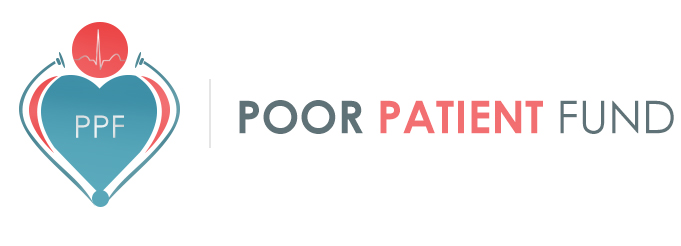
ACUTE PANCREATITIS (Part 1)
- Posted Category : Articles
- 13 November 2016
The incidence of acute pancreatitis is increasing, and it is now one of the most common reasons for hospitalization with a gastrointestinal condition.
CAUSES OF ACUTEPANCREATITIS Gallstones are the most common cause. Migrating gallstones cause transient obstruction of the pancreatic duct, a mechanism shared by other recognized causes (e.g., endoscopic retrograde cholangiopancreatography [ERCP]). Alcohol is the second most common cause of acute pancreatitis. Prolonged alcohol use (four to five drinks daily over a period of more than 5 years) is required for alcohol-associated pancreatitis; the overall lifetime risk of pancreatitis among heavy drinkers is 2 to 5%.
In most cases, chronic pancreatitis has already developed and the acute clinical presentation represents a flare superimposed on chronic pancreatitis. The risk is higher for men than for women, perhaps reflecting differences in alcohol intake or genetic background. The mechanisms by which alcohol causes acute (or chronic) pancreatitis are complex and include both direct toxicity and immunologic mechanisms. The type of alcohol ingested does not affect risk, and binge drinking in the absence of long-term, heavy alcohol use does not appear to precipitate acute pancreatitis. Drugs appear to cause less than 5% of all cases of acute pancreatitis, although hundreds of drugs have been implicated.
The drugs most strongly associated with the disorder are azathioprine, 6-mercaptopurine, didanosine, valproic acid, angiotensin-converting–enzyme inhibitors, and mesalamine. Pancreatitis caused by drugs is usually mild. Mutations and polymorphisms in a number of genes are associated with acute (and chronic) pancreatitis, including mutations in the genes encoding cationic trypsinogen (PRSS1), serine protease inhibitor Kazal type 1 (SPINK1), cystic fibrosis transmembrane conductance regulator (CFTR), chymotrypsin C, calcium-sensing receptor, and claudin-2. These mutations may serve as cofactors, interacting with other causes; for example, claudin-2 mutations work synergistically with alcohol.
The cause of acute pancreatitis often cannot be established, and the proportion of persons who are considered to have idiopathic acute pancreatitis increases with age. A number of potential factors might contribute to unexplained pancreatitis, including unidentified genetic polymorphisms, exposure to smoking and other environmental toxins, and effects of coexisting diseases that are commonly associated with acute pancreatitis (e.g., obesity and diabetes).
Morbid obesity is a risk factor for acute pancreatitis and for severe acute pancreatitis. Type 2 diabetes increases the risk of acute pancreatitis by a factor of 2 or 3 folds. Both obesity and diabetes are also risk factors for chronic pancreatitis and pancreatic cancer. EPIDEMIOLOGY Studies worldwide have shown a rising but variable incidence of acute pancreatitis, including large increases in incidence in pediatric populations. This increased risk of pancreatitis tracks with the worldwide obesity epidemic and increasing rates of gallstones. Approximately 80% of patients admitted with acute pancreatitis have mild, self-limited disease and are discharged within several days. Mortality associated with acute pancreatitis has decreased over time, and the overall mortality is now approximately 2%.
Death is more likely in certain subgroups of patients, including the elderly, those with more numerous and more severe coexisting conditions (particularly obesity), those in whom hospital-acquired infections develop, and those with severe episodes of acute pancreatitis (characterized by persistent failure of one or more organ systems or infected pancreatic necrosis). DIAGNOSIS AND CLASSIFICATION Accurate diagnosis of acute pancreatitis requires at least two of the following three diagnostic features: abdominal pain consistent with acute pancreatitis, serum lipase or amylase levels that are at least 3 times the upper limit of the normal range, and findings of acute pancreatitis on cross-sectional imaging (computed tomography [CT] or magnetic resonance imaging [MRI]).
Patients with vague abdominal symptoms and a minimally increased serum amylase or lipase level should not receive a diagnosis of acute (or chronic) pancreatitis. Cross-sectional imaging is invaluable in confirming an initial diagnostic impression, in assessing patients for other conditions that might mimic acute pancreatitis, and in evaluating patients with atypical symptoms or small elevations in serum pancreatic enzyme levels. According to a recent international consensus, the classifications of moderately severe pancreatitis and severe pancreatitis are defined by the presence of complications that are systemic, local, or both. Systemic complications include failure of an organ system (respiratory, cardiovascular, or renal) and exacerbation of a preexisting disorder (e.g., chronic obstructive pulmonary disease, heart failure, or chronic liver disease).
Local complications comprise peripancreatic fluid collections or pseudocysts and pancreatic or peripancreatic necrosis, whether sterile or infected. In this classification system, persistent failure of an organ system (i.e., lasting more than 48 hours) is the prime determinant of a poor outcome. The overall mortality is approximately 2%, but it approaches 30% among patients with persistent failure of an organ system. According to another classification system, the presence of both persistent organ failure and infected pancreatic necrosis (“critical” pancreatitis) is associated with the highest mortality. By providing standardized definitions and descriptions of severity, as well as radiographic features, these classification systems for acute pancreatitis have value in clinical research. However, they do not provide methods for predicting severity.
The NEW ENGLAND JOURNAL of MEDICINE
All opinions and comments displayed do not necessarily represent the official opinion of the website, but they represent the view of the writer
